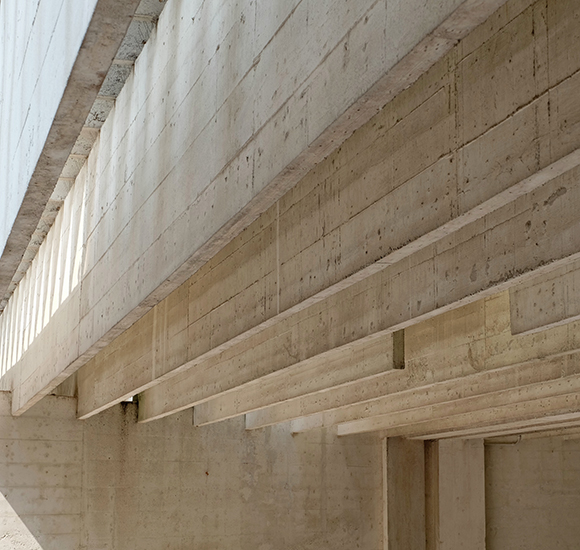 |
 |
 |
 |

Nordic Pavilion
Venice
1958 - 1962
The famous Nordic Pavilion in Venice by Sverre Fehn
is the result of an architectural competition, and is considered to be
a key work in the oeuvre of the Norwegian architect. Originally there
were invited Klas Anshelm from Sweden, Reima and Raili Pietilš from
Finland and Sverre Fehn from Norway to draw up plans for the so-called ‘Nordic’ pavilion. The competition asked for a space, which would be able to unite a
triumvirate of nations within a single building. In 1959 the proposal by Sverre Fehn was selected, and soon after the decision, Sverre Fehn's design was praised in the Svenska Dagbladet: “stunning
simplicity [...], without too many
architectural overtones”. As his Pavilion for the Brussels exposition,
the Nordic Pavillion in Venice is carried by the same idea as the
Barcelona-Pavilion by Ludwig Mies van der Rohe - the amalgamation of
modernism and classicism. The pavilion is a simple building, classic in
its basic rules and its structure. This building is often considerd to
embody Nordic architectural traditions, but Sverre Fehn himself tried
to transform and invert these traditions. Sverre Fehn completely
removed two of the building's four boundary walls, getting a space
which is anything else than traditional, as a closed space which shuts
out the elements would be a typical vernacular in Norway. Even the roof
is dissolved into a grid of slender beams to be essentially open to the
sky. As mentioned the architect used slender concrete lamellae instead
of heavy timber beams. The lamellaes are pigmented to glow in the
sunlight, resulting in the light characteristics which were often
described to be Nordic, and which are considerd to be a metaphor for
sunlight falling on a quilt of snow. Sverre Fehn used a combination of
white cement, white sand and crushed Italian marble, resulting in a
material which is responsible for the qulity of light of incredible
intensity, tranquility and most importantly - steady homogeneity.
Through this material and construction, the warm Mediterranean light
ist distlled into its 'Nordic' variation, creating a nearly shadowless
space. With his design for the Pavilion in Venice, Sverre Fehn did not
seek to mimic a Nordic vernacular. The Nordic Pavilion, situated in the giardini of the Biennale
di Venezia
within an uninhabitaded and fragmented context, the building exposes a
more complex architectural attitude, trying to rewrite the sense of a
''Nordic'' architecture, adapted to the Venetian climate. The complex
spatial gesture of the Nordic Pavilion is composed of only few simple
architectural elements: roof, wall, stair, beam and the ground. The
Nordic Pavillion is not only an assemblage of the mentioned parts but
the culmination of an orchestration
of spatial ideas and atmospheric
intentions. The 'roof', which is more like a collection light wells,
consists of two layers of concrete brise-soleil. Preventing a
monotonous appearance, the rigidity of the grid is interrupted by a
series of openings through which the three remaining internal trees
(originally there were seven) punctuate vertically through the
construction. The lamelleas are only six-centimetres thin and one meter
heigh, two layers of lamelleas are superimposed, creating a plane of
two-metre deep pockets, arranged at a ratio of 1:2. These lamelleas
span the space in a single span. Sverre Fehn once stated, that he
wanted to do nothing more than to 'construct a roof to protect the
paintings and sculpturs from direct sunlight', as the building was
first intended to work as a gallery.
